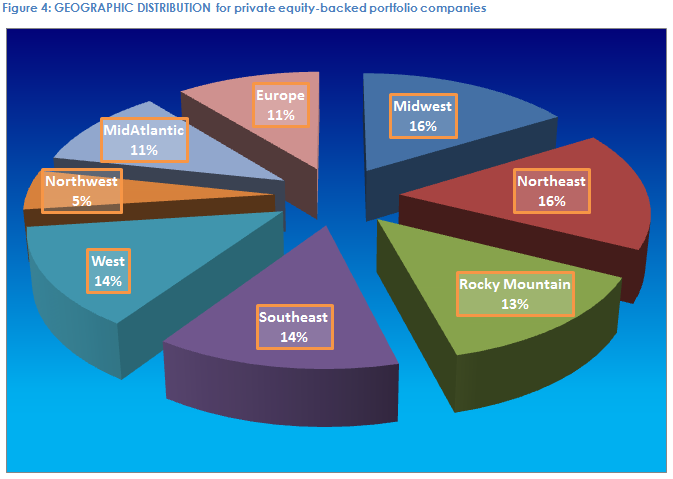Private Equity Info Blog Blog Archive The M A Process
Post on: 16 Март, 2015 No Comment

The M&A Process
Posted on February 23, 2009, 4:41 pm, by Andy, under Internal Announcements .
The mention of mergers & acquisitions conjures up images of Wall Street, pin-striped suits, power negotiations and complex financial dealings. While M&A transactions certainly require solid problem solving skills, contrary to Hollywood mega-deal imagery, some M&A transactions simply require following the prescribed steps to close the deal. This article attempts to outline those steps.
From the sell-side perspective (the perspective from the company to be sold), the M&A process transverses several distinct phases:
M&A Advisor Selection
While some companies use in-house corporate finance staff (normally to make acquisitions) most companies hire outside investment banking firms for M&A transactions. The first step in the process then is to select the most appropriate investment banking firm for the given transaction.
Ideally, the selected M&A advisory firm would consistently close deals of a similar size and nature, having a “sweet spot” within the size range of the selling company. If the investment banker normally works on much larger transactions, the client may be pawned off to more junior bankers and would therefore not receive the senior-level attention the client deserves. If the banker typically works on much smaller transactions, the intermediary may not have the expertise and deal sophistication required for the transaction.
While not a strict requirement, it is often beneficial if the investment banker has relevant transaction experience in the same industry as the client company. As a general rule, the smaller the deal size, the less relevant this point is. For the largest transactions, this point is considered a prerequisite to be considered for the client engagement.
The M&A advisor selection process normally consists of several meetings with each potential advisor. During the first introductory meeting, the investment banker presents his or her firm’s relevant credentials to the Seller. The investment banker will also describe the services to be provided and will learn more about the client, the client company and the client’s strategic objectives going forward.
During the second meeting, the investment banker usually presents the seller with a “pitchbook” that describes the investment bank in more detail and outlines the strategic alternatives for the client – the likely buyers, the M&A process, a valuation range for the company as well as the proposed fee structure the investment bank will charge for its services.
In selecting an M&A advisor, the Seller signs an engagement letter outlining the service to be provided, the fee structure and other general terms of agreement. Compensation terms vary, depending on the investment bank, deal size and particular client, but generally the bulk of the compensation is in the success fee, typically a percentage of the deal size and contingent on a transaction closing. Other fees may include an up-front engagement fee and reimbursements for out-of-pocket expenses.
Preparation
After an M&A advisor is selected, the work begins on preparation of various marketing materials and a marketing plan to sell the company. It also begins the process of gathering the required documents needed later in the due diligence phase of the transaction.
Marketing materials typically consist of an Executive Summary of the company for sale and an Information Memorandum. which details all aspect of the business and describes the seller’s desired transaction.
Marketing
Once the marketing materials and marketing plan are in place, the deal process moves into the marketing phase. During this phase, the investment banker will contact targeted potential buyers, usually falling into one of several general categories:
- Strategic Buyers – often a direct competitor or a company operating in the same space but in a different geographic market.
- Industry Buyers – usually a company operating in a synergistic or related space but perhaps not currently a competitor. An example might be a company wishing to integrate upstream or downstream in the supply chain within its current market.
- Financial Buyers – firms that exist with a business model of buying, growing and exiting companies. To the extent that a financial buyer already holds a complementary company in its portfolio, a financial buyer may also appear to be a strategic or industry buyer… this is sometimes the best of both worlds. The ability to quickly find these financial buyers who are also strategic in nature is one of the great values that www.PrivateEquityInfo.com provides to its subscribers.

The marketing process usually begins by sending an Executive Summary of the business to prospective buyers. The Executive Summary is general in nature and does not provide sufficient detail to identify the actual Seller. Potential buyers with acquisition interests within the range described by the Executive Summary will sign a Non-Disclosure Agreement (NDA) to proceed further in the transaction. Upon receipt of an NDA, the potential buyers will receive the Information Memorandum (IM), which describes the company in great detail.
Letter of Intent
After signing the NDA and reviewing the IM, interested buyers typically submit a Letter of Intent (LOI). An LOI is a non-binding document describing the general price, terms and conditions of the eventual offer.
There are typically only two binding components of a Letter of Intent.
- Confidentiality
- No-Shop Clause – states that, upon signing the LOI, the Seller may not continue to offer the business to other prospective buyers. As a practical matter, because the Buyer is now spending real money and expending real effort going forward to close the deal, the Seller should not be able to nullify this effort by offering the business to another interested party in the interim.
A fortunate buyer receives multiple, simultaneously LOIs and may play buyers off each other in an effort to obtain the best price and terms. Eventually, due to the No-Shop Clause, the Seller must select a single Buyer with which to proceed into the Due Diligence phase. When multiple offers are received, it can be difficult to decide which potential Buyer is best suited to move forward with because each offer will differ in various dimensions making an apples-to-apples comparison quite difficult. This is where the expertise of the investment banker should weigh in to help the Seller decide which potential Buyer will most likely close the deal and best satisfy the Seller’s objectives (which may include factors beyond the financial consideration).
Due Diligence
The Due Diligence phase of an M&A transaction can be a grueling process for both Buyer and Seller. Due Diligence is an effort to prove out the content of the Information Memorandum in great detail. If there are inconsistencies or red flags that arise during due diligence, the Buyer may want to renegotiate the terms of the offer.
Contract
If the Due Diligence proves out and the Buyer and Seller are still in general agreement on the price and terms of the transaction, the lawyers draft the final Contract spelling out all terms of the transfer of ownership. The initial pages of the Contract are typically reserved for the main deal points and are followed by many more pages of legalese describing in great detail the representations and warranties, conditions of default, remedies, etc. To most Principals in the transaction (the actual Buyer and Seller), the Contract makes for some pretty boring reading after about page four, but the details in this document are in fact very important. While there is some standard language from contract to contract, M&A contracts are not boiler plate documents and the significance of the small details should not go unnoticed because they can have a significant impact.














